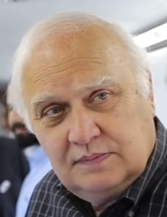Leeham News and Analysis
There's more to real news than a news release.
Bjorn’s Corner; The Engine Research Institutes
October 14, 2016, ©. Leeham Co: In our Corners on East bloc aeronautical industries, we will now look at the role of the Research Institutes in Russian and Chinese civil aircraft engine development.
The Russian engine industry is organized similarly to the aircraft industry. It has a powerful research organization which has a much larger role than research organizations in the West.
A large part of fundamental design work and testing is done at the research institute and not at the design bureau level, Figure 1.

Figure 1. PD-14 engine altitude testing at the Central Institute of Aviation Motor Development (CIAM) in Moscow. Source: CIAM.
The Chinese organization of the engine industry is similar, the difference being that the research organizations are organized within the giant AVIC (Aviation Industry Corporation of China) grouping, rather than reporting to the state via a research organization path. Read more
Bjorn’s Corner: The Chinese aircraft engine industry
October 07, 2016, ©. Leeham Co: In our Corners on East bloc aeronautical industries, we will now look at the Chinese civil aircraft engine industry.
The Chinese engine industry is closely modeled after the Chinese aircraft industry that we looked at last week. It is organized as divisions and later subsidiaries to the major aircraft companies. Contrary to the Chinese aircraft industry, it has had major problems in gaining the necessary know-how to start developing and producing its own designs.
The industry has built Soviet designs on license since the 1950s and only recently managed to present functional own designs, after many failures.
Bjorn’s Corner; The Chinese civil aircraft industry
September 30, 2016, ©. Leeham Co: In our Corners on East bloc aeronautical industries, we will now look at the Chinese civil aircraft industry.
The Chinese aero industry has similarities with the Russian industry in its overall structure. From the start of the industry in the 1950s, it was structured after the Soviet model of research institutes, design bureaus and production companies.
The difference to the Soviet Union was that its own Chinese aircraft designs only started in the 1970s. Before that, the industry built Soviet designs on license and then modified versions of licensed designs.
The first own aircraft designs were presented in the 1980s with a focus on military designs for the first 20 years. Read more
Russian-Chinese wide-body: Program responsibilities
By Bjorn Fehrm
Subscription required.
Introduction
September 29, 2016, ©. Leeham Co: We will now finish our series about the Russian-Chinese wide-body with looking at who will have what role in the program.
As we described in the initial article, “Background and outlook,” Russia and China have vastly different competencies when it comes to making a state of the art wide-body aircraft.
Russia has made airliners since the 1930s, including wide-body jets. China did not design its own jet aircraft (military or civil) until the mid-1980s. Most of the aircraft produced still today in China have their origin in Russian designs.
At the same time, we saw in the article about the market demand for the aircraft that the Chinese market is 90% of the home market. This makes for China demanding important parts of the aircraft’s production, and China has the money to invest in production facilities.
All this will influence how different parts of the project will be shared between Russia’s United Aircraft Corporation (UAC) and Commercial Aircraft Corporation of China (COMAC).
Summary:
- Russia and China enter the wide-body project with widely different knowledge bases.
- Russia has long time knowledge on how to develop and produce aircraft and their engines.
- China on the other hand has the market for the aircraft.
- China also know a lot about serial production and have money to invest. Read more
Russian-Chinese wide-body: Aircraft performance
By Bjorn Fehrm
Subscription required.
Introduction
September 19, 2016, ©. Leeham Co: In Part 4 of the article series, we put together an assumed complete Chinese-Russian wide-body aircraft with fuselage, wing, engines, etc. It is now time to understand what kind of performance that can be expected, given the data we have from the wide-body partners, Russia’s United Aircraft Corporation (UAC) and the Commercial Aircraft Corporation of China (COMAC).
We will combine these data with the ones we have deduced as plausible to fill the gaps, given the time frame and technology level that UAC and COMAC intend to use.
Out will come a first estimate of what kind of performance such an aircraft can have in terms of efficiency and payload versus range capability.
Summary:
- We can use all the data we have gathered to make a first estimate of the efficiency of the Russian-Chinese wide-body.
- We also have enough information to do a first payload-range diagram and to compare that with the diagram for Boeing’s 787-9.
Russian-Chinese wide-body: The aircraft, Part 4
By Bjorn Fehrm
Subscription required.
Introduction
September 15, 2016, ©. Leeham Co: In Part 3 of this series, we identified the type and size of wing we would have on a new Russian-Chinese wide-body. It’s now time to go through all the considerations around the engines for the aircraft.
The aircraft would enter the market around 2025. We would have to decide on what size engine that would be needed, what engines would be available at the time and could this project motivate any new engine developments.
Summary:
- The Russian-Chinese wide-body as outlined would require engines in the size class of the Boeing 787-9/10.
- GE and Rolls-Royce have been mentioned as engine suppliers. The question would be: will they offer updated 787 engines or new designs and will Russia compete with its announced engine project for the aircraft?
Russian-Chinese wide-body; The aircraft Part 3
By Bjorn Fehrm
Subscription required.
Introduction
September 08, 2016, ©. Leeham Co: Having covered the possibilities of reusing parts of the Il-96 fuselage for a new Russian-Chinese wide-body, it’s now time to look at the existing IL-96 wing and how far this is from a modern design.
The intent is not to propose that the existing wing is reused but rather to check the technology level against western designs and how big a leap it will be for the partners to make a modern high performance wing for the aircraft.
Summary:
- The IL-96 wing is roughly on the technological level of the Airbus A340-300 wing with a bit lower aspect ratio.
- The dimensions are close to what is needed for the new wide-body but sweep and aspect ratio needs to be changed for a new wing.
- A wing for a 2025 long range wide-body also need a more modern construction technology than classical aluminum alloys.





